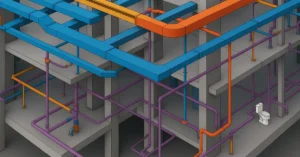The Dynamics of Architectural Education: What’s New in 2024?
Architectural education plays a pivotal role in shaping the future of the built environment. As we move into 2024, the landscape of architectural education is evolving rapidly, driven by technological advancements, societal changes, and emerging trends in design and sustainability. This article explores the current dynamics of architectural education, highlighting new approaches, challenges, and opportunities that are reshaping the curriculum and preparing future architects for the challenges ahead.
Introduction to Architectural Education
Architectural education encompasses a blend of theoretical knowledge and practical skills essential for designing and constructing buildings that are functional, aesthetic, and sustainable. Traditionally rooted in design studios, architectural education has expanded to integrate interdisciplinary studies, digital technologies, and global perspectives to meet contemporary demands.
Emerging Trends in Architectural Education
1. Integration of Digital Technologies
Digital technologies such as Building Information Modeling (BIM), virtual reality (VR), and parametric design tools are increasingly integrated into architectural curricula. Students learn to leverage these tools for advanced modeling, simulation, and visualization, enhancing design exploration and communication.
2. Sustainability and Resilience
With growing emphasis on sustainability and climate resilience, architectural programs are incorporating courses on green building practices, passive design strategies, renewable energy systems, and resilient urban planning. Students are encouraged to address environmental challenges through innovative design solutions.
3. Interdisciplinary Collaboration
Architects are now expected to collaborate with professionals from diverse fields including engineering, environmental science, sociology, and economics. Architectural education fosters interdisciplinary collaboration through joint studios, research projects, and workshops, preparing students for complex real-world projects.
4. Global Perspectives and Cultural Context
Architectural education emphasizes understanding cultural contexts and global influences on design. Study abroad programs, international studios, and cultural immersion experiences expose students to diverse architectural traditions, urban landscapes, and socio-economic dynamics worldwide.
Innovative Approaches in Architectural Pedagogy
1. Design-Build Studios
Design-build studios integrate hands-on construction experience into the curriculum, allowing students to conceptualize, design, and build architectural projects from inception to completion. These studios promote practical skills, teamwork, and project management capabilities.
2. Research-Based Design
Research-based design studios encourage students to explore complex societal issues and propose architectural interventions backed by empirical research. This approach fosters critical thinking, design innovation, and evidence-based decision-making in architectural practice.
3. Digital Fabrication and Maker Spaces
Maker spaces equipped with digital fabrication tools such as 3D printers, laser cutters, and CNC machines enable students to prototype architectural models and experimental designs. These facilities promote exploration of materiality, fabrication techniques, and digital craftsmanship.
Challenges and Opportunities in Architectural Education
1. Adapting to Technological Advances
Architectural educators face the challenge of keeping pace with rapid technological advancements while ensuring foundational design principles are not compromised. Integrating new technologies into the curriculum requires ongoing professional development and investment in digital infrastructure.
2. Addressing Climate Change and Sustainability
The urgency of climate change necessitates educating future architects on sustainable design principles and strategies. Architectural programs are evolving to emphasize environmental stewardship, resilience planning, and the ethical responsibilities of architects in mitigating environmental impacts.
3. Promoting Diversity and Inclusion
Architectural education is increasingly focused on promoting diversity, equity, and inclusion within the profession. Efforts to diversify student cohorts, faculty representation, and curriculum content aim to create inclusive learning environments that reflect the broader societal fabric.
Future Directions in Architectural Education
1. Continued Integration of Technology
Architectural education will continue to embrace emerging technologies such as AI-driven design tools, augmented reality (AR), and digital twins. These technologies will enhance design exploration, simulation capabilities, and collaborative workflows in architectural practice.
2. Expanding Global Engagement
Globalization will drive architectural programs to expand international partnerships, exchange programs, and joint research initiatives. Cross-cultural collaborations will enrich students’ perspectives and foster global citizenship among future architects.
3. Advancing Professional Licensure and Accreditation
Architectural education will prioritize preparing students for professional licensure through rigorous academic standards and accreditation processes. Programs will adapt to evolving licensure requirements and industry standards to ensure graduates are well-equipped for professional practice.
Conclusion
As architectural education evolves in response to technological advancements, societal demands, and environmental imperatives, the role of educators and institutions becomes increasingly pivotal in shaping the next generation of architects. By embracing innovative pedagogical approaches, interdisciplinary collaboration, and global perspectives, architectural programs can empower students to navigate complex challenges and contribute meaningfully to the built environment in 2024 and beyond.
If you’re interested in learning more about architecture firms in Europe, check out this comprehensive list of the top 50 firms compiled by Archgyan. From innovative startups to long-established industry leaders, this list has it all. Take a look and discover some of the most inspiring and influential architecture firms in Europe today.
If you’re interested in architecture and want to learn more about this amazing field, subscribe to our podcast on youtube
For more SketchUp tutorials, head to https://www.sketchupguru.com










